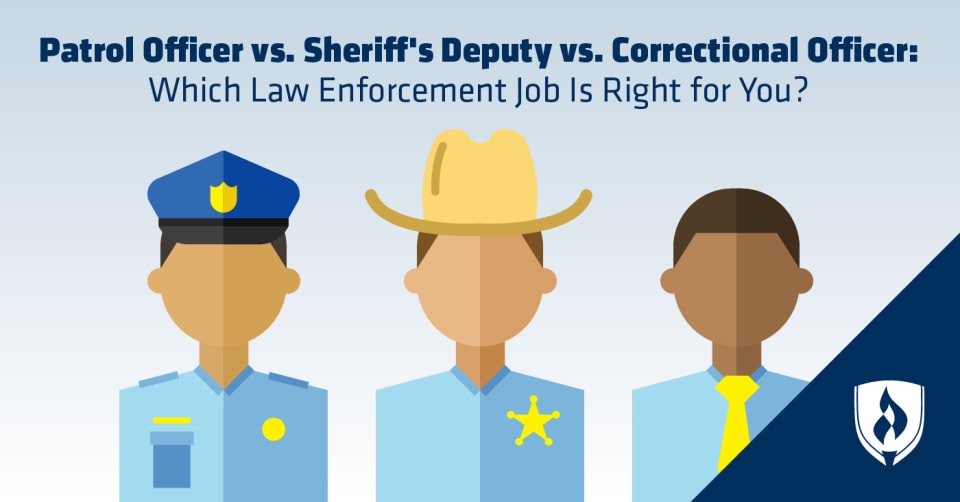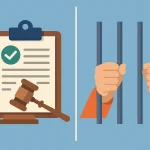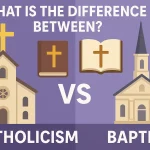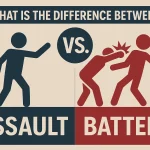Have you ever wondered why some officers wear a sheriff’s badge while others are called police? This difference might seem trivial at first, but it’s crucial for understanding how law enforcement operates in your community.
Whether you’re curious about who handles what in your local area, or you’re just a fan of crime shows and want to know more, you’re in the right place. Knowing the difference between a sheriff and police can empower you with knowledge about your rights, safety, and the people who serve to protect you.
Dive in, and let’s uncover the unique roles and responsibilities that define these two essential parts of the justice system.

Roles And Responsibilities
When discussing law enforcement, it’s crucial to understand the distinct roles and responsibilities of sheriffs and police officers. These two entities serve the community in unique ways, each with specific duties that cater to different aspects of public safety and community interaction. Knowing their differences can help you recognize who to turn to in various situations.
Law Enforcement Duties
Sheriffs are generally responsible for enforcing laws at the county level. They often manage the county jail and have jurisdiction over areas that might not fall under municipal police control. You might encounter a sheriff at a county courthouse or when dealing with rural issues.
Police officers, on the other hand, focus on city or municipal law enforcement. Their duties include patrolling neighborhoods, investigating crimes, and responding to emergencies within city limits. A local police officer is likely who you see when calling 911 in a city for immediate help.
Community Engagement
Community engagement is where you can see a tangible difference between sheriffs and police. Sheriffs are elected officials, often making them more attuned to the community’s needs and concerns. They might host town hall meetings or involve themselves directly in community events.
Police departments, conversely, often employ officers who specialize in community outreach programs. These officers work to build trust and relationships within neighborhoods. If you attend a local safety seminar or community policing event, you’re likely seeing police efforts in action.
Have you ever wondered how these roles impact your daily life? Recognizing their unique duties helps you understand how they each contribute to community safety. Next time you see a police car or sheriff’s vehicle, consider the specific responsibilities tied to each. How might their roles influence your neighborhood’s safety and community spirit?

Jurisdiction
Sheriffs and police serve different roles in law enforcement. Sheriffs cover county areas and manage jails, while police handle city duties. Both maintain public safety but operate within distinct jurisdictions.
Understanding the jurisdiction of law enforcement agencies is crucial for grasping their responsibilities and limitations. When you hear about the sheriff and police, you might wonder how their roles differ. Jurisdiction is a key factor that sets them apart. It dictates where and how they operate, and knowing these differences can help you appreciate the unique contributions of each.Geographical Areas
Sheriffs typically have jurisdiction over entire counties. Picture a sheriff as the guardian of vast rural spaces and small towns. They often manage law enforcement in areas where police departments might not have a presence. In contrast, police departments focus on cities and municipalities. They are your go-to for urban law enforcement, handling everything from bustling downtowns to residential neighborhoods. If you live in a city, the police are likely your first point of contact for local issues.Legal Authority
The sheriff’s legal authority can be more expansive than that of police officers. Sheriffs often perform duties that go beyond typical law enforcement. They might oversee county jails, manage court security, or serve legal documents like subpoenas. Police officers, however, concentrate on maintaining public order and safety within city limits. They respond to emergencies, investigate crimes, and enforce city-specific laws. Their role is more specialized, centered around urban challenges. Have you ever thought about how these differences impact your community? Understanding jurisdiction helps you know who to call in different situations. Next time you hear a siren, consider whether it’s the sheriff or police responding and how their jurisdiction shapes their actions.Leadership Structure
Sheriffs are elected officials, usually serving a county. Police officers are appointed and serve city areas. Sheriffs often manage jails and court duties, while police focus on law enforcement within city limits.
Understanding the leadership structure of law enforcement agencies can demystify the roles of sheriffs and police officers. Their leadership styles differ significantly, impacting how each operates and serves the community. Let’s dive into these differences to see how they affect decision-making and accountability.Elected Vs. Appointed
Sheriffs typically hold an elected position. Voters in the county choose them, which means they are directly accountable to the public. This election process can make sheriffs more attuned to the community’s concerns and priorities. On the other hand, police chiefs are usually appointed. They are chosen by a city’s mayor or city council. This can mean their focus aligns more with the city’s strategic goals rather than direct public opinion. Have you ever thought about how this election versus appointment impacts leadership? It can shape how policies are enforced and community relationships are maintained.Chain Of Command
The chain of command in a sheriff’s department is relatively straightforward. The sheriff is at the top, often followed by deputies and other staff. This simple hierarchy can lead to clear communication and swift decision-making. In contrast, police departments often have a more complex chain of command. You might find several layers, including captains, lieutenants, and sergeants. This layered structure can ensure thorough deliberation but might slow decision-making. Consider how these structures might affect response times or policy changes. Which structure do you think is more effective in handling emergencies or community concerns? Understanding these leadership differences can help you better grasp how each agency functions. Whether elected or appointed, each leader plays a crucial role in shaping the safety and well-being of your community.Historical Background
The roles of sheriff and police have distinct historical origins. Understanding their roots can provide clarity. Both have evolved over centuries, adapting to societal needs.
Origins Of Sheriff
The concept of a sheriff dates back to medieval England. The term “sheriff” comes from “shire reeve.” It was an official appointed by the king. Their role was to maintain law and order. Sheriffs collected taxes and upheld royal laws. This position was crucial in maintaining peace. They also managed local courts and pursued criminals. The role of sheriff became a staple in local governance.
Development Of Police Forces
Police forces have a more recent history. The modern police system began in the 19th century. Sir Robert Peel founded the first organized police force in London. This was known as the Metropolitan Police. It was designed to maintain public order. Officers, called “Bobbies,” patrolled the streets. Their presence aimed to deter crime. Over time, police forces spread worldwide. They became essential for urban safety.
Training And Qualifications
Understanding the roles of sheriff and police requires knowing their training and qualifications. Both play vital roles in maintaining law and order. Yet, their paths and skill sets differ significantly.
Educational Requirements
Sheriffs often have varied educational backgrounds. Many start with a high school diploma. Some pursue further education in criminal justice. This helps them understand law enforcement basics.
Police officers usually require more formal education. Most departments prefer candidates with some college education. Degrees in criminal justice or law are common. This equips them with necessary knowledge for the field.
Specialized Training
Sheriffs receive unique training tailored to their duties. They often manage jails and court security. This requires specialized skills not taught in standard law enforcement training.
Police officers undergo rigorous training in police academies. They learn about patrol techniques and emergency response. Defensive tactics and firearms handling are essential parts of their training. This prepares them for various situations on the streets.
Both roles demand dedication and continuous learning. Each has distinct responsibilities, requiring specific skills and knowledge.
Community Impact
The roles of sheriffs and police officers affect communities in unique ways. Their influence can be seen in public perception and community relations. Understanding these impacts helps appreciate their roles better.
Public Perception
Sheriffs often hold elected positions. This gives them a unique level of public accountability. Communities see them as more approachable. This differs from police, who are usually appointed. Police officers work under a city government. They focus on urban areas. This can create a perception of distance. People might see them as less personal.
Community Relations
Sheriffs and deputies often work in rural areas. They build long-term relationships with residents. Their presence is constant and familiar. This fosters trust and cooperation. Police officers, on the other hand, usually serve larger urban areas. Their interaction with the community can be brief. They respond to calls and patrol neighborhoods. Their relationships are often more formal. This can affect the level of trust between police and residents.

Frequently Asked Questions
What Are The Main Duties Of A Sheriff?
A sheriff primarily manages county jails, serves legal documents, and oversees court security. Sheriffs have jurisdiction across the entire county. They also handle law enforcement in rural areas. In some states, sheriffs are elected officials and hold a significant administrative role within the county’s law enforcement structure.
How Does Police Jurisdiction Differ From Sheriff’s?
Police jurisdiction is typically limited to city boundaries. They handle local law enforcement, traffic control, and community policing. Sheriffs, on the other hand, cover wider county areas, including rural zones. This distinction allows police to focus on urban issues while sheriffs manage broader county-level responsibilities.
Can Sheriffs Make Arrests Like Police?
Yes, sheriffs can make arrests similar to police officers. They have the authority to enforce laws across the county. This includes arresting individuals suspected of breaking the law. Sheriffs and deputies often collaborate with local police in joint operations to maintain public safety.
Is A Sheriff Higher Than A Police Officer?
A sheriff is not necessarily higher but has a broader jurisdiction. Sheriffs oversee county-level law enforcement, while police focus on city-level duties. Both roles are crucial for maintaining law and order. The sheriff’s position may also come with more administrative responsibilities within the county.
Conclusion
Sheriffs and police serve important roles in law enforcement. Sheriffs typically cover larger areas and manage county jails. Police focus on city law and public safety. Both work to keep communities safe. Their duties can sometimes overlap, but they have distinct responsibilities.
Understanding these differences helps in knowing who to contact. Whether it’s a sheriff or a police officer, both aim to protect and serve. Knowing this helps you appreciate their unique roles. Stay informed, and you’ll understand their contributions better.

I’m someone who’s always been fascinated by how small differences can lead to big understanding. That’s why I love writing “What’s the difference between…” content; it helps me explore topics from multiple angles and explain them in a clear, practical way. Whether it’s tech, productivity, business, or everyday decisions, I enjoy making complex ideas easier to compare, understand, and act on.









